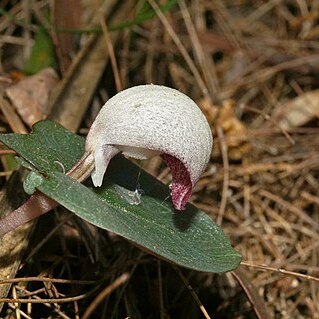A small ground orchid. It grows 2-4 m tall in flower. It has a round tuber and one leaf at the base. This is round or heart shaped and 1.4-3.5 cm long by 1.4-3.6 cm wide. It lies flat on the ground. It is greyish-green above and reddish-purple underneath. There is one flower that is white with a pink tinge at the tip. The fruit is a capsule 2 cm long.

